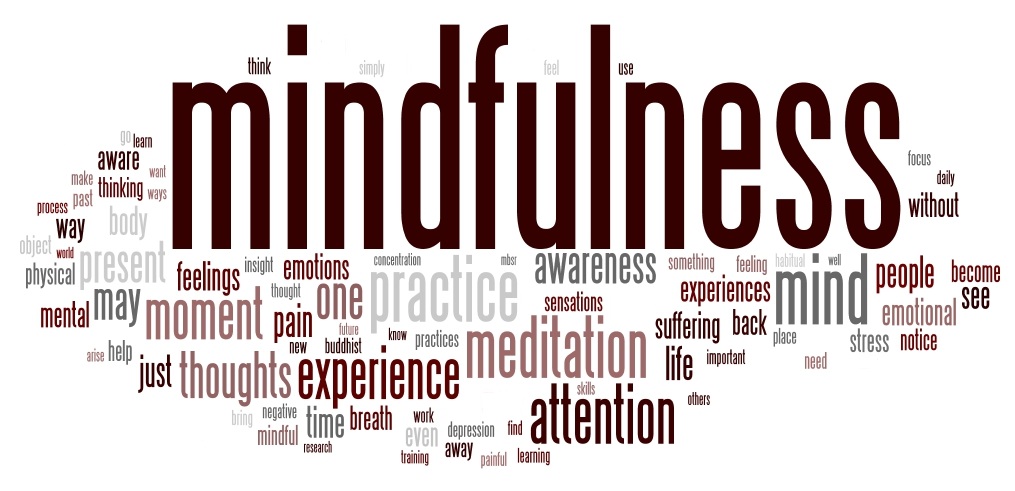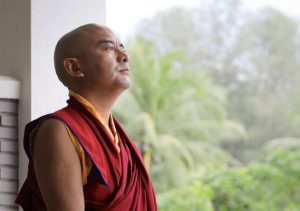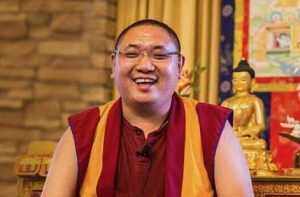As anyone interested in meditation or Buddhism will have noticed, there has been considerable coverage recently of the benefits of mindfulness in a so-called “secular” setting. The discussion has centered in particular on the eight-week Mindfulness-Based Stress Reduction (MBSR) course and its sister course, Mindfulness-Based Cognitive Therapy (MBCT). As interest has grown, however, concerns have been expressed, principally from Buddhist quarters, about the nature and adequacy of MBSR. These concerns seem to focus on, among other things, the possible dilution of mindfulness owing to its apparent divorce from a wider Buddhist context of world view and praxis; misunderstandings about what mindfulness actually is; and the kinds of people to whom it is sometimes taught.
As a Hong Kong-based MBSR course facilitator, I would like to touch on a few of these points, and hope to seek an underlying harmony rather than “either/or” positions. In doing so, I will offer views of what MBSR does and does not seek to impart regarding the question of its connection with its Buddhist roots; which kinds of participants it offers it to; and the role of the course facilitator in communicating key aspects of both the MBSR course and its Dharma content.
MBSR grew out of a need, felt by Jon Kabat-Zinn as an experienced Dharma practitioner, to bring the benefits of his Dharma practice initially into the treatment of hospital patients undergoing varying degrees of suffering, and then to a wider mainstream American audience that generally had little interest in Asian religions. His intention was to enable participants to reduce suffering arising from increasingly stressful lifestyles. As he says, “From the very beginning there was for me one primary and compelling reason for attempting to bring mindfulness into the mainstream of society. That was to relieve suffering and catalyse greater compassion and wisdom in our lives and culture” (Kabat-Zinn 2013, 285).
With this as context, therefore, in discussing whether mindfulness is overly divorced from its Buddhist roots it is valuable to understand the background of participants, and especially what they themselves are generally seeking from an MBSR course, and, based on this, whether it is even necessary for MBSR to mirror the Buddhist Dharma in all particulars. People come from many backgrounds and for
many reasons, of course, but one thing is clear enough: they are generally not coming to MBSR in search of a new religion, Buddhist or otherwise. If they were, there would be many places for participants to seek this out more directly. Moreover, MBSR does not claim to provide an end to suffering, which is the explicit purport of the Buddha’s path. How could it? Rather, participants come in search of what MBSR does propose: a reduction in stress and suffering, and an ability to learn practices that they can then go on to use after the course in managing their stress and finding greater balance in their lives. Where their meditation practice then leads for each individual is for them to decide, up to and including formally taking up a Buddhist training.
In offering this, MBSR does indeed honor its Buddhist roots (as Kabat-Zinn often publicly remarks), starting with the motivation of compassion for the suffering of others. Beyond this, within its limited time frame MBSR seeks to make skillful use of key elements from the Dharma in order to provide participants with fresh perspectives on how suffering is generated, and practices to use to work with it. In this regard, any informed Buddhist could come on an MBSR course and identify many elements of the Dharma that have been worked into the course, but without their having been named in specifically Dharma terminology: the Four Noble Truths, loving kindness, the Three Marks of Existence, ethics, and more. Yet in a sense, simply name-checking Buddhist teachings is beside the point (and from which of the variety of Buddhist traditions anyway?) Rather, MBSR seeks to guide participants towards the essence of what the mindfulness teachings are also pointing to: “the richness of the present moment held gently in awareness, and the profound and authentic authority of each person’s own experience, equally held with kindness in awareness” (Kabat-Zinn 2013, 299).
So, although MBSR’s view and practice draw from Dharmic vision, it does not seek to be exhaustive. Nor can it be, as discussed earlier, since the course has to make several assumptions about its audience. Firstly, it assumes (correctly, in the great majority of cases) that people initially have no obvious interest in becoming “Buddhists” as such. Secondly, it assumes participants are beginners at meditation. Thirdly, MBSR must recognize its time-constraints: it is simply an eight-week course during which necessarily only a limited range of skills and perspectives can be imparted. As a result of these factors, the course must inevitably leave many Buddhist concepts implicit, including some of its approaches to mindfulness. It seeks quality of beginning practice rather than quantity of concepts. If participants can be grounded in good practice, it is precisely in the practice—more than in discussing all the concepts—where suffering will be reduced, and where an interest in taking meditation further will be ignited. In the end, MBSR is about the pressing task of reducing suffering. Participants can then go on after the course to deepen both conceptual understanding and practice under the guidance of Dharma teachers if they so choose: in the final week of the course, we focus on ways of continuing the practice, which includes recommendations of Buddhist reading material, teachers, and centers.
In considering whether the nature of mindfulness is fully taught in MBSR, some criticisms seem to focus on the issue of the “non-judgmental” quality of mindfulness as taught in MBSR, and how canonical Buddhist presentations of mindfulness differ from this. Quite apart from the fact that it is sometimes used by Buddhist meditation teachers themselves, I have found that an encouragement of non-judging is a very useful teaching device to enable new meditators to get a taste of what it is simply to stand back from their experience, before then going on to engage with it in ways that allow for creative choice. This, for many, is a very new experience, and one which they can refine as the course progresses. Furthermore, issues of non-judgment and what we do with experience often arise in the Q&A “inquiry” sessions, in which participants ask questions and discuss their practice experiences. It is here that the trainer can work further, especially regarding the indissoluble links between mindfulness, loving kindness, ethics, and a range of other qualities. Much depends on the approach of the MBSR trainer. Although the syllabus is fixed, the terrain, as Kabat-Zinn has said, is unscripted and remains fairly flexible, especially in the inquiry sessions. Furthermore, since, as discussed above, many Dharma elements have been smuggled into the course by Kabat-Zinn himself, the flexibility, skill, and languaging of the course trainer are crucial in deploying these whilst staying true to MBSR’s terminology, syllabus, and aims.
Regarding the audiences for MBSR courses, trainers are sometimes criticized for offering MBSR to, for example, corporations or the military. In addition, as mindfulness finds ever wider applications, for example in schools, for a variety of disorders, in mental healthcare, leadership, and a host of other settings, there seem to be concerns about how widely MBSR is being taught in “secular” domains, and how qualified some trainers are. To be sure, training and personal practice must be a prime concern for those who seek to offer the highest standards (here I cannot speak for other mindfulness courses that have been developed in the wake of MBSR)—but surely the issue cannot be judged in advance. It seems an unwisely broad-brush approach for MBSR trainers to be criticized for offering training to groups such as stressed executives, stressed schoolchildren, soldiers with post-traumatic stress, or those troubled with a myriad other disorders. After all, these groups are presumably among those who need it most. Each individual participant is a human being, not a job title, and one who has sensed a need in their life—so who can be sure how seeds that are sown via MBSR will bear fruit down the line? Although I mostly work from a neutral location, I am happy if lawyers, bankers, or soldiers come to my courses and find some ease for their stress there. However, those who specifically target such user-groups as in-house trainers will presumably be sensitive to their own motivations, comfortable with the relevant specialisms required, and responsible to the aims of the MBSR course itself. Opportunists with a shallow mindfulness practice will eventually be caught out.
Ultimately, the Buddha Dharma offers practical strategies and far-reaching knowledge that humans can use to work at ever deeper levels with their condition, and the MBSR trainer can introduce key elements of this knowledge in terms that a diverse group of mostly non-Buddhist suffering beings can relate to. This holds open the possibility that, following the foretaste offered over the eight weeks, some will be inspired to go on and investigate the Buddha’s teaching itself.
References
Kabat-Zinn, Jon. 2013. “Some reflections on the origins of MBSR, skilful means, and the trouble with maps.” In Mindfulness: Diverse Perspectives on its Meaning, Origins and Applications, edited by J. Mark G. Williams and Jon Kabat-Zinn, 281–306. Abingdon: Routledge.















